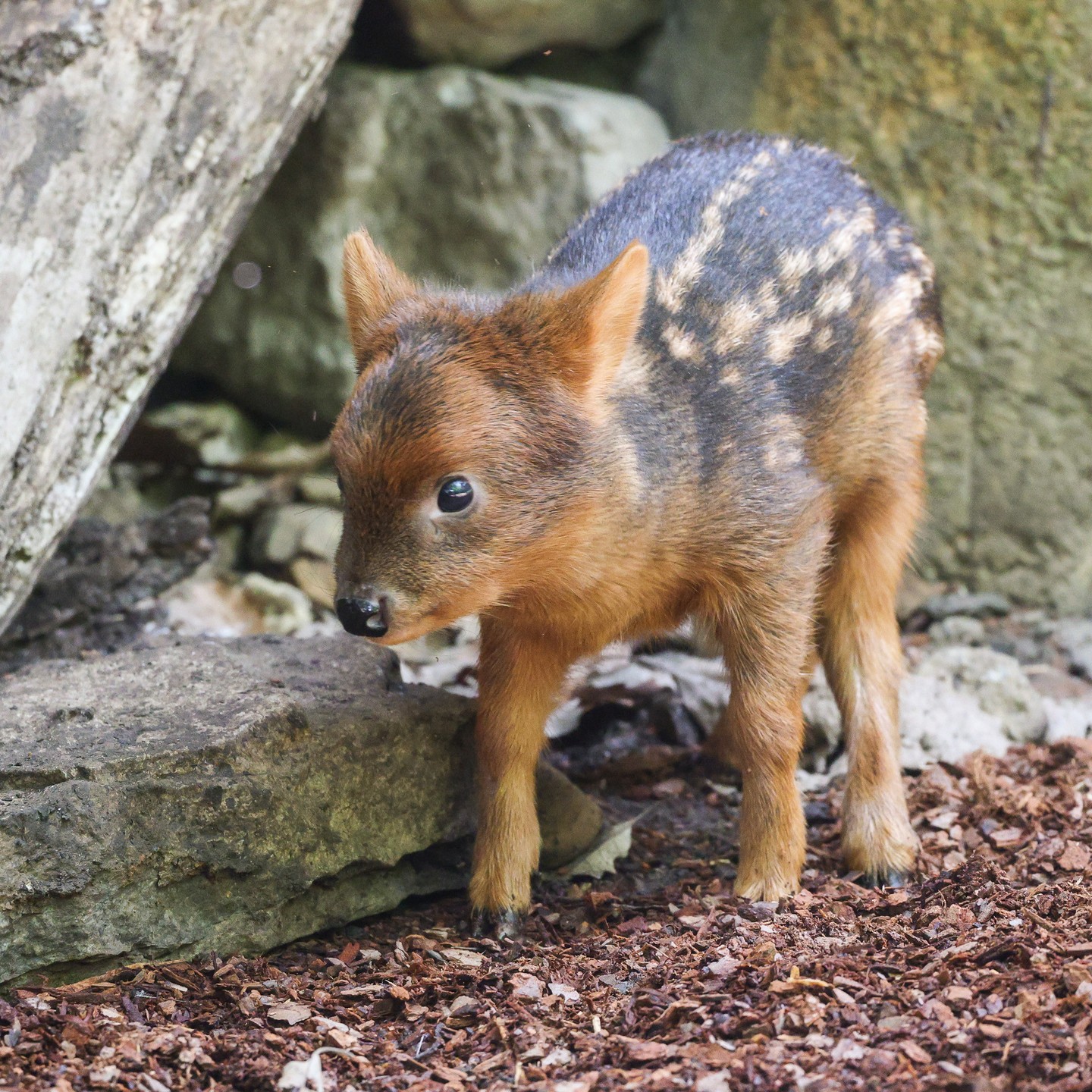- Introduction to Nashville Zoo’s First Southern Pudu Birth
- The Unique Biology and Behavior of Southern Pudus
- Habitat and Conservation Challenges Facing Southern Pudus
- The Importance of Zoological Institutions in Conservation Efforts
- Celebrating New Life and Raising Awareness for Endangered Species
A momentous event has occurred at the Nashville Zoo: the birth of a male southern pudu fawn. Born to first-time parents Bosa and Pacu on April 28, this birth is significant as it marks the first-ever arrival of a southern pudu at the zoo. Visitors can witness this charming addition in Expedition Peru, and it’s a splendid occasion to celebrate Bosa’s entry into motherhood. This event not only brings joy but also highlights the importance of species conservation and education about these diminutive deer.
Southern pudus are recognized as the smallest deer species worldwide, native to the lush forests of southern Chile and southwestern Argentina. These petite creatures are uniquely adapted to thrive in dense woodland environments, where they navigate through underbrush with ease. This feature is vital for escaping predators and foraging for food, which primarily consists of leaves, fruits, and bamboo shoots.
The biology of southern pudus is as fascinating as their diminutive stature. Adult pudus typically weigh between 20 to 33 pounds and stand about 12 to 16 inches tall at the shoulder. These animals may be small, but their keen senses and adaptability make them adept at surviving in their natural habitats. Solitary by nature, pudus rely on their camouflage and stealth to remain undetected in the wild. This shyness poses challenges for researchers, but it also underscores the importance of preserving their environment to help maintain natural behaviors.
Southern pudus live amid dense forest cover, where their small size offers them an evolutionary advantage. These habitats, however, are increasingly threatened by human activities, such as deforestation and urban development. Efforts to preserve the natural environments of pudus are vital, and conservationists prioritize habitat protection as a cornerstone of their strategies. By safeguarding the forests, we ensure the ongoing survival of these animals and the myriad other species sharing their ecosystem.
At the forefront of conservation efforts, zoological institutions play a crucial role. By providing a safe haven for endangered species, these organizations contribute expertise in managing breeding programs, conducting research, and raising public awareness. At Nashville Zoo, the birth of this southern pudu fawn exemplifies these efforts’ success. Through managed breeding programs, zoos can create genetic reservoirs that are crucial for species survival, especially as wild populations face ongoing threats.
Moreover, zoos serve as educational platforms, inspiring and informing the public about the significance of biodiversity. Visitors to Nashville Zoo have the opportunity to learn about the challenges facing southern pudus and other endangered species, fostering a conservation mindset. This knowledge empowers individuals to support and participate in initiatives aimed at protecting wildlife and their habitats.
The arrival of a new southern pudu at Nashville Zoo is not merely a joyful event for the institution; it is a critical moment for conservation. This fawn symbolizes hope for the species’ future and underscores the hard work and dedication of those involved in wildlife conservation. As we celebrate this new life, we also reinforce our commitment to safeguarding the world’s biodiversity for generations to come.
This joyous occasion offers an opportunity to engage with broader conservation discussions. By understanding the delicate balance within ecosystems and the impact of human activity, we can make informed decisions to protect and preserve our natural world. Supporting organizations dedicated to conservation, participating in sustainable practices, and advocating for habitat preservation are all actions that contribute to these goals.
In highlighting the southern pudu at Nashville Zoo, we draw attention to the importance of maintaining global biodiversity. By appreciating the intricate dependencies within ecosystems, we acknowledge the vital role each species plays. The southern pudu serves as a charming ambassador for conservation, reminding us of the beauty and fragility of nature. Through awareness and action, we can create a future where both people and wildlife thrive.
*****
Source Description
Tiny hooves, big news! 🦌
We’re thrilled to announce that a male southern pudu fawn was born on April 28 to first-time parents Bosa (mom) and Pacu (dad), marking the first ever southern pudu birth at Nashville Zoo! You can see them in Expedition Peru and be sure to wish Bosa a happy first Mother’s Day! 💛
Southern pudus are the smallest deer species in the world, native to southern Chile and southwestern Argentina. These shy, solitary animals thrive in dense forests and feed on a variety of plants, including leaves, fruits, and bamboo. Their small size helps them move easily through dense vegetation and avoid predators.


